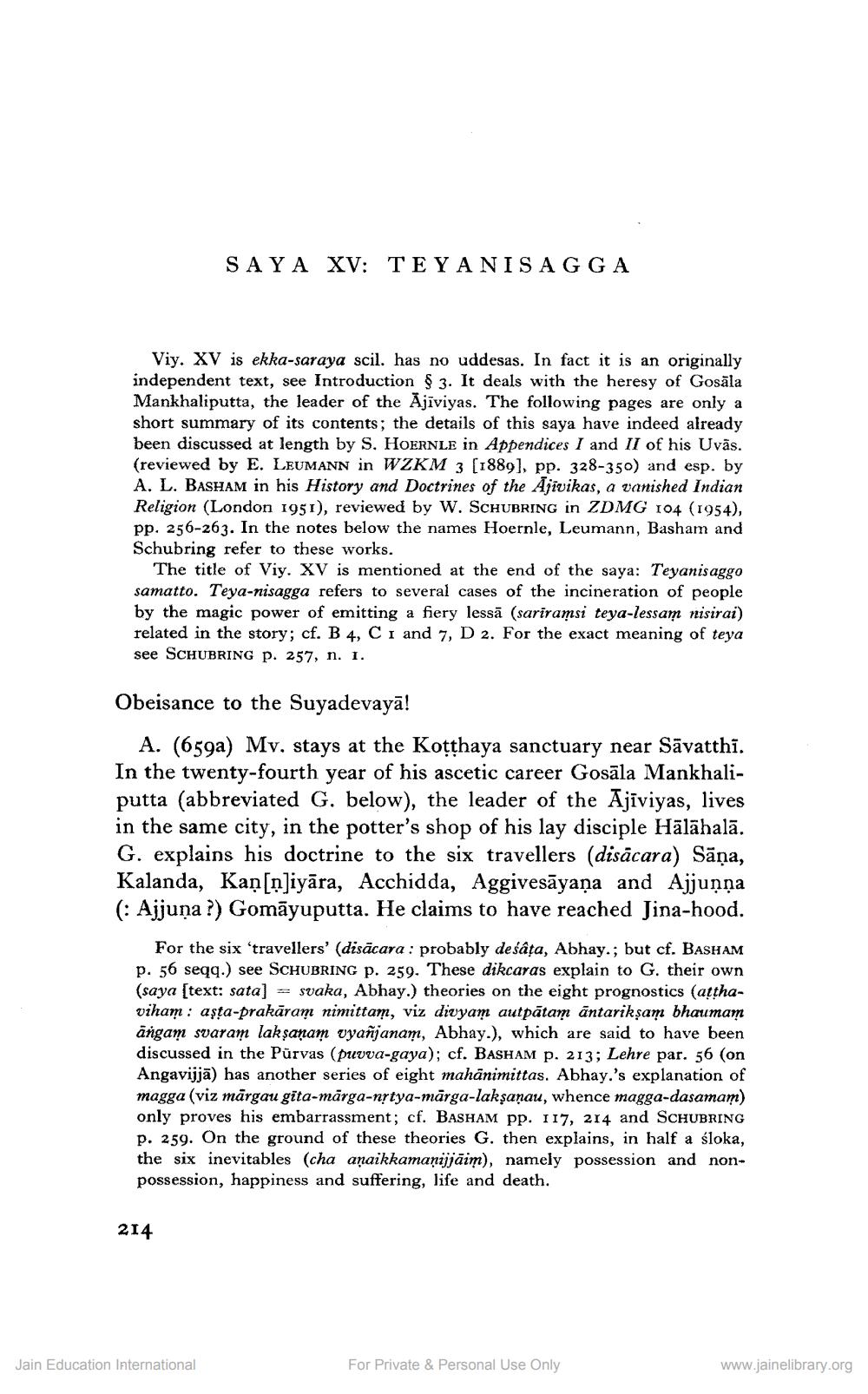________________
SAYA XV: TEYANIS AGGA
Viy. XV is ekka-saraya scil. has no uddesas. In fact it is an originally independent text, see Introduction $ 3. It deals with the heresy of Gosāla Mankhaliputta, the leader of the Ajīviyas. The following pages are only a short summary of its contents; the details of this saya have indeed already been discussed at length by S. HOERNLE in Appendices I and II of his Uvās. (reviewed by E. LEUMANN in WZKM 3 (1889), pp. 328-350) and esp. by A. L. BASHAM in his History and Doctrines of the Ajivikas, a vanished Indian Religion (London 1951), reviewed by W. SCHUBRING in ZDMG 104 (1954), pp. 256-263. In the notes below the names Hoernle, Leumann, Basham and Schubring refer to these works.
The title of Viy. XV is mentioned at the end of the saya: Teyanisaggo samatto. Teya-nisagga refers to several cases of the incineration of people by the magic power of emitting a fiery lessā (sariramsi teya-lessam nisirai) related in the story; cf. B 4, C i and 7, D 2. For the exact meaning of teya see SCHUBRING p. 257, n. 1.
Obeisance to the Suyadevayā!
A. (659a) My, stays at the Kotthaya sanctuary near Sāvatthī. In the twenty-fourth year of his ascetic career Gosāla Mankhaliputta (abbreviated G. below), the leader of the Ajīviyas, lives in the same city, in the potter's shop of his lay disciple Hālāhalā. G. explains his doctrine to the six travellers (disācara) Sāņa, Kalanda, Kaņ[n]iyāra, Acchidda, Aggivesāyaṇa and Ajjuņņa (: Ajjuna ?) Gomāyuputta. He claims to have reached Jina-hood.
For the six 'travellers' (disācara : probably desâța, Abhay.; but cf. BASHAM p. 56 seqq.) see SCHUBRING P. 259. These dikcaras explain to G. their own (saya (text: sata] = svaka, Abhay.) theories on the eight prognostics (atthaviham: aşta-prakāram nimittam, viz divyam autpātam antarikşam bhaumam angam svaram laksanam vyañjanam, Abhay.), which are said to have been discussed in the Pūrvas (puvva-gaya); cf. BASHAM P. 213; Lehre par. 56 (on Angavijjā) has another series of eight mahānimittas. Abhay.'s explanation of magga (viz mārgau gita-märga-nrtya-mārga-laksanau, whence magga-dasamam) only proves his embarrassment; cf. BASHAM pp. 117, 214 and SCHUBRING p. 259. On the ground of these theories G. then explains, in half a śloka, the six inevitables (cha anaikkamanijjāim), namely possession and nonpossession, happiness and suffering, life and death.
214
Jain Education International
For Private & Personal Use Only
www.jainelibrary.org




